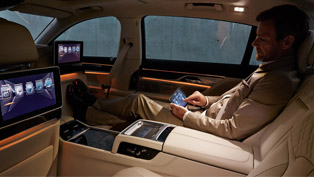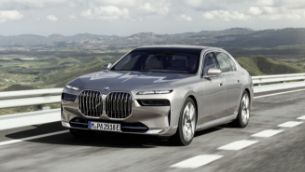The Design of the BMW 7 Series
Stylish design and supreme engineering give the BMW 7 Series its unique character. Here inspiring luxury comes together with thrilling driving dynamics and visual presence simply bound to evoke the greatest acknowledgment and recognition.
BMW 7 Series comes with all the fortes and features a luxury performance saloon is able to offer these days thanks to the most sophisticated and refined art of engineering. Both the design of the body and the interior contribute to the truly fascinating driving experience the car is able to provide.
From outside, the exterior of this supreme saloon boasts a harmonious blend of elegance and sportiness, clearly reflecting the supreme comfort and dynamic driving behaviour of the BMW 7 Series. The interior, in turn, is character-rised by the most inviting modern style clearly expressing the superior function of the controls and instruments and bearing testimony to the sophisticated materials and perfect quality of finish.
Superior interplay of know-how in technology and the very best design gives the BMW 7 Series perfect flair and balance from every angle. And the innovations featured in the BMW 7 Series, to focus on another essential point, give the driver maximum supremacy at all times.
Through its design alone, BMW's luxury performance saloon boasts natural presence. Perfect harmony of product substance and convincing looks, of the driving experience and the particular style and design of the car, makes the BMW 7 Series a particularly good and credible representative of its segment - and, at the same time, a convincing ambassador of the BMW brand.
Harmony of elegance and sportiness is indeed the crucial issue in the body design of the BMW 7 Series. Apart from the long wheelbase, the sleek and stretched engine compartment lid, and the short front overhang, the passenger compartment moved relatively far to the back as well as the low and muscular roofline characterise the dynamic proportions of the BMW 7 Series.
This smooth interaction of elegance and sportiness comes out particularly clearly in the side-line of the car, the dynamic proportions clearly expressing the sporting character of the saloon, with the stretched and precise flow of lines conveying a superior feeling of elegance.
In its interior design, the BMW 7 Series emanates luxury in particularly modern style. Indeed, the innovative interior concept is characterised by the clearly structured arrangement of functions relevant to the driver, on the one hand, and the superior all-round comfort, on the other, the ambience of the car bearing out a supreme standard of exclusivity, sophisticated style and, in particular, a tempting desire to get inside and enter a new dimension.
With the centre console angled slightly towards the driver's side, the cockpit comes once again with the driver orientation so typical of a BMW. Multifunction steering wheel with an even wider range of controls, the instrument cluster with its display in revolutionary black panel technology as well as the BMW iDrive Controller and the Dynamic Driving Control unit all positioned on the centre console near the electronic gear selector lever for the automatic transmission featured as standard likewise serve to keep the driver in superior control at all times.
The clear structure of the cockpit in combination with horizontal lines and gently sweeping shapes again emphasises the sheer generosity of BMW's luxury performance saloon, with superior style and flair also borne out by enhanced comfort and spaciousness.
The highly attractive, modern but very sophisticated style of the interior is ensured by stylish combinations of colour, the use of top-class materials, and exclusive quality of finish characterised by the highest standard of craftsmanship and production skill.
This authenticity of design to be admired throughout the car as a whole and in each individual detail is the result of a truly exceptional process of creation conceived specifically for the development of cars by the BMW Group. In addition, the unique look of the BMW 7 Series clearly expresses both the exceptional passion and the creative finesse of BMW's designers in their quest to find the best possible solutions.
Design as an expression of character on the BMW 7 Series. The design process is made up of three phases: From the start, the process of design means close cooperation with all other deparments and specialists involved in the development and production of a BMW. The starting point is to define the fundamental features of the product, which leads to the character of the model and sets the basis for the complete range of technical and interdisciplinary development.
Apart from the key values of the brand, particularly natural presence, superior sportiness, and precise elegance throughout the exterior as well as an inviting, modern style and charming function were identified from the start as crucial to the character of this outstanding model. So from the beginning, this definition sets the decisive benchmarks for both the design and the technological highlights of the car.
Considering the large number of contributing factors, the first phase of the design process requires a high level of integration. After all, all technical innovations available are to be implemented here in an appropriate manner subsequently perceived as perfect in their function and thrilling in their design by the user of the car. At the same time other demands and requirements made by Marketing, Sales and Production also have to be taken into account.
The criteria crucial to every design concept include the demands and knowledge gained in materials research, production technology, safety, ergonomics, and aerodynamics. And while these factors may impose limits on the design of a car, they may also open up freedom and further options for both the designer and developer.
Yet a further point is the clear orientation to the customer with his specific wishes and needs. The ongoing process of coordination conducted as a result ensures an efficient mutual exchange of ideas and concepts, the Design Engineering Department acting as the link between the designer, on the one hand, and the engineer, on the other. Indeed, the specialists in this Department make a decisive contribution in establishing a common view of all functions involved in the development process, focusing on the many demands and requirements made of the car.
The first phase of the design process also serves in particular to establish and define the right proportions. Particularly the graceful look of the car from the side reflects its fundamental character, the BMW 7 Series interpreting the classical look and design of a saloon in a truly sporting manner typical of the brand.
The perfectly balanced interplay of elegance and sportiness is therefore clear right from the beginning, firm and taut surfaces around the wheel arches and the doors as well as the slender shoulder area above the character line extending from the headlights at the front all the way to the rear light clusters at the back emphasising the elegant character of BMW's luxury performance saloon.
The greenhouse with its particularly light and agile look sets clear signals for sportiness above all through the slender window frames and pillars, the contours of the greenhouse giving the BMW 7 Series a coupé-like look of particular elegance. This special style extends from the low-slung transition of the engine compartment lid into the steeply raked A-pillar along the low roofline all the way to the gentle, sweeping rear section flowing down to the bootlid.
The design of the BMW 7 Series: the result of keen competition among the best creative designers. The BMW Group's process of designing a vehicle and finding the ideal shape is based on a concept of keen competition. In the development of each model, several design teams compete with one another in their design of the exterior and interior in a truly creative contest. Made up of designers and modellers, the teams then, in the second phase of the design process, complete models in original, 1:1 size clearly showing the aesthetic harmony of the car's proportions and surfaces. To do this they use a simple but very important material in the design process - clay.
It is indeed fair to say that only a few car makers attach such great significance to 1:1 models and refine them in such a unique, highly detailed manner.
To conclude this phase in the design process where intuitive and creative design interacts with a straightforward, methodical approach, the clay models are covered with a special film similar to the subsequent paintwork of the final car. This allows the beholder to realistically consider and judge not only the car's proportions and dividing lines, but also and in particular the surface of the modelled sculpture under all kinds of different light conditions, ultimately choosing the model which fulfils all requirements and complies with the target vision in every respect.
Following the verification of technical requirements already completed by this time, the decision-makers are able to focus in full on aesthetic and emotional aspects in judging and appraising the design models.
On the successful design of the BMW 7 Series, the model which ulti-mately won the contest, the concepts of natural presence, superior sportiness and precise elegance, as defined in advance, were all implemented in ideal harmony. The most significant and striking expression of the car's presence is the extra-large, upright and particularly low-slung kidney grille dominating the front end of the car and seemingly standing upright within the body.
The elegant character of the saloon is accentuated above all by the shoulder-line at the side stretching from the headlights via the door openers all the way to the rear light clusters. The rear view, in turn, emanates a combination of power, sportiness and supremacy, the rooflines flowing down dynamically along the flanks of the car to the bumpers and horizontal light edges emphasising the sheer width of the car.
The interior design likewise follows the philosophy of inviting, modern style and charming function, the structure of the cockpit, the choice of materials, the lines themselves and the colour scheme all interacting to give the BMW 7 Series its characteristic overall look. The result of this consistently applied design concept is an ambience focusing on generosity, superior command of the car, and modern luxury all in one.
The final design phase: optimisation at the highest level. Enhancing the design chosen into a series production car is an equally demanding and challenging task. After all, a sculpture refined by human skill and style is converted in the third and final phase of the design process into a product reproducible by machines in the production process.
The first step in this case is to convert the clay model in a CAD design process by laser scanning into a three-dimensional feasibility model serving from now on as the technical reference point for ongoing development.
From now on the final phase of the design process means optimisation at the highest conceivable level. Each and every detail is fine-tuned to the last millimetre in a constant exchange among designers, engineers, modellers and production specialists in order to ensure perfect implementation of the premium standard on the final product in each and every detail.
At this point the designers and modellers show all their creative passion on both the exterior and interior, searching for perfection and proving their finesse in the refinement of all surfaces and lines.
Such refinement of the original design not only enhances individual details to the highest standard following the concepts of specialised design teams, but also serves to perfect the overall impression of the vehicle so crucial to the car's design and its emotional impact.
Like every other BMW, the BMW 7 Series owes its unmistakable character clearly recognisable at very first sight from every perspective to this process of ongoing enhancement and refinement.
The front end: clear structures and generous surfaces ensuring natural presence. Seen from the front, the BMW 7 Series offers a clear, calm and collected appearance through its large and smoothly designed engine compartment lid. The contour lines on the engine compartment merge into one another at the front, pointing towards the BMW kidney grille just like the headlight units peaked towards the inside.
The kidney grille itself sticks out far to the front, ensures a precise and clear- cut look, and is integrated in the front air dam without any seams or openings in between. At the same time the kidney grille, through its upright bars, accentuates the vertical stance of the front end as an essential element giving this luxury performance saloon particular presence and calibre.
The wide air scoop at the bottom extends across the entire front air dam all the way to the sides. Foglamps in clear glass look positioned far to the outside at the edge of the air intakes serve to additionally emphasise the wide track of the car. This special look is further accentuated by a chrome band bordering on the air intake at the top. Generously designed dual round headlights, as yet a further feature, ensure that concentrated look again so typical of BMW. Indeed, this particular look is outstandingly striking on the BMW 7 Series, resulting, first, from the corona rings for the daytime driving lights and, second, from an additional lights bar positioned on top of the dual round headlights like an eyelid to provide a particular optical effect at the top.
Yet another design feature is the direction indicators formed by eight LEDs on each side and arranged in two upright rows at the outside next to the cylindrical light units.
Sculptural surfaces and precise lines at the side. Modern design of the various surfaces giving this luxury performance saloon truly unmistakable character is yet another feature characteristic of BMW in general and the BMW 7 Series in particular. The combination of skilled craftsmanship, precise technology and a perfect feeling for the unique flair of a BMW creates a truly unique sculptural effect.
The interplay of concave and convex surfaces so typical of BMW generates highly effective light and shade lines accentuating both the powerful and dynamic expression and the refined elegance of the car in every respect and from every angle. A good example is the side area appearing to grow out smoothly and gently towards the rear wheel of the car, without a typical wheel arch in the conventional sense of the word.
The subtle enlargement of the side area created in this way is a particular result of the work done on the clay model and therefore a product of the close and highly effective cooperation of designers and modellers practised within the BMW Group.
Design features and refinement of this calibre call for decades of experience and supreme competence in finding the right design and in the subsequent production of the car's body.
The long shoulder line adds further elegance to the side view of the car. Directly beneath this precisely chiselled line the side surface is carefully modelled in a highly attractive convex look, while further down on the doors the side surfaces take on a concave curvature. Again even further down, this surface borders on the high-rising doorsill line.
Interacting with one another, the shoulder and doorsill lines give the car a particularly sleek and stretched look from the side. And at the same time the high-rising doorsill line adds the impression of a particularly slender and athletic body.
A chrome-plated gill insert complete with fully integrated side direction indicators between the front side panel and the driver's and, respectively, front passenger's door adds a further visual effect and touch of style. The character line of the wheel arch merging gently and smoothly into the doorsill line starts at the front edge of the side gill which, as a particular proportional feature on sporting cars, accentuates the long distance between the front axle and the instrument panel.
Many other details confirm the clear focus of BMW's designers on precision and individual variability, thus highlighting selected design features in particularly subtle style. The headlight units and rear light clusters of the BMW 7 Series, for example, just like the side window graphics, are surrounded by frames literally chiselled into the surface of the body.
This again confirms the high standard of craftsmanship and the perfect command of even the most complex production processes BMW has achieved over the years. In particular, this effect emphasises the reverse line at the bottom of the C-pillar well-known as the BMW "Hofmeisterknick".
The window graphics are exceptionally elaborate and, at the same time smooth and sleek thanks to the particular design and look of the chrome bar surrounding the glass surfaces and made in one piece.
The side view of the BMW 750Li and the BMW 740Li again boasts all these particular design features. With their wheelbase extended by 240 millimetres or almost 9.5", these long-wheelbase models give even greater emphasis to the superior comfort and, indeed, sheer luxury offered on the rear seats. The extra body length is provided entirely along the rear doors, thus ensuring particularly comfortable and convenient access to the car.
Both long-wheelbase models furthermore feature a uniquely designed roofline and C-pillar contours giving the car a side view clearly related to that of the standard-wheelbase saloon and combined with extra headroom on the rear seats.
Horizontal lines at the rear for a particular touch of power and supremacy. The sculptural design of the car's surfaces also ensures smooth transition of the side panels into the rear end of the BMW 7 Series. The striking character line, for example, continues into the lights cover on the rear-light clusters where this particular design is taken up by the graphic design structure.
The rooflines flow across the flanks of the car right down to the bumper, encompassing the rear end by dynamic lines again providing a particularly sporting touch.
Horizontal lines and light edges, in turn, help to give the rear end a particularly powerful and superior overall look. The chrome band positioned above the numberplate support and connecting the entire width of the bootlid from one light cluster to the other is a particularly striking feature. The light edges on the luggage compartment lid and the rear bumper then run parallel to the chrome band, which also surrounds the rear light clusters. The sheer width of the rear end is highlighted and accentuated both by this additional structural design of the rear bumper and by the two reflectors positioned far to the outside.
The two-piece rear light clusters on the BMW 7 Series again boast the L-shaped contours so typical of the BMW brand. Inside, the rear lights are dominated by wide, horizontally arranged light bars in a three-dimensional look rising up from the inside to the outside and thus following the contours of the light units.
Fed by LEDs, the light bars generate a warm and homogeneous lighting effect. The direction indicators also feature LED technology, just as the third brake light positioned on the upper edge of the rear window and the numberplate illumination use light-emitting diodes.
Modern, luxurious, inviting: the interior. The interior design and configuration of the BMW 7 Series combines all features and characteristics destined to make both active motoring and the shortest or longest ride in this outstanding saloon a truly impressive and highly enjoyable experience. Gently flowing contours, high-class materials and stylish colour combinations create an aura of generosity and seductive, modern style in a truly unique ambience. The clear, driver-oriented structure of the cockpit offers ideal conditions for a truly superior experience in the car. Intuitive arrangement of the controls and instruments, in turn, makes it even easier for the driver to mastermind all functions easily, smoothly, and without the slightest confusion.
The BMW 7 Series expresses its individual character also through its modern interpretation of luxury, appropriate use of high-class materials in conjunction with excellent quality of finish enhancing both the exclusive flair of the car and the charming function of the interior.
Apart from the car's unique space and grace with more than generous kneeroom, headroom and elbow room meeting the highest standards at both front and rear, the particular design of the interior in the BMW 7 Series conveys the impression of luxury in truly convincing and modern style. The entire ambience is exclusive and sophisticated - and, in particular, very inviting.
Clear horizontal and vertical arrangement of all controls and instruments again serves to optimise the orientation towards the driver, successfully integrating highly complex technology and a wide range of functions within the car. The controls and instruments required directly for motoring are clear and well-known to the driver right from the start, with intuitive control also of elementary comfort functions such as the ventilation, air conditioning and audio system.
The very positive initial impression conveyed by the car's interior is immediately enhanced by the high-quality, sophisticated materials used throughout the passenger compartment as well as the distinctly exclusive quality of finish. The result is a calm, convincing and, indeed, overwhelming ambience making it easier for the driver and the passengers alike to find their orientation and feel pleasantly at home.
Right from the start, the driver encountering the BMW 7 Series will be thrilled by the feeling of controlling the most sophisticated high-performance technology in a truly exclusive ambience. The instrument panel is split up into several levels one above the other, separated by horizontal lines running parallel across the entire width of the interior.
Both the instrument cluster and the Control Display come on one level, just below the decorative trim likewise extending across the entire width of the instrument panel and comprising the controls and buttons for all major functions.
The controls border at the bottom on a chrome bar, again providing a touch of class emphasising the horizontal orientation of the cockpit.
Thanks to the use of innovative display and surface technology, the Control Display does not require the usual binnacle protecting the instrument from sunglare - yet another touch promoting the clear tranquillity and smooth structure of the cockpit.
Cockpit design for more superior motoring. The horizontal subdivision of the instrument panel makes a significant contribution to the ease of control and safety at the wheel the driver will enjoy so much. This effect is then further enhanced by the sensible and there- fore easy-to-remember vertical arrangement of the instruments and control units. All information and controls relevant to the process of driving the car are on the side facing the driver, while all displays, controls and switches serving to provide comfort functions are positioned more to the middle of the car.
The arrangement of control units on the multifunction steering wheel follows the same logic, again giving the driver supreme security and ease of control at the wheel. In order to take up information or activate a function, the driver is required - if at all - to only briefly take his eyes off the road. On the other hand there is no need to spend a long time looking for buttons and switches used only rarely, since all controls are positioned clearly where they should be in logical arrangement.
As an important example in this context, the driver assistance controls suppor-ting the driver in his perception of traffic conditions and his awareness at the wheel are positioned appropriately on a control panel in the immediate vicinity of the lights switch centre.
This clear structural arrangement of the cockpit gives the driver superior routine within a very short time also in the use of additional functions not required under all conditions. Hence, the wide range of technical features and options offered by the BMW 7 Series is experienced as an enrichment of the driving experience, immediately giving the driver supremacy at the wheel of the BMW 7 Series without the slightest effort or learning process.
Ideal combination of ergonomics and aesthetic design. The driver-oriented design and configuration of the centre console is yet another feature typical of BMW. Slightly inclined towards the driver, the centre console houses the control units for, among other features, the air condi-tioning, the audio system volume control, and the iDrive favourite buttons.
In their design and configuration, the Controller and its direct selection buttons were influenced by both aesthetic and ergonomic considerations. When using the Controller, the driver's arm is in a similar position as when operating the selector lever on the automatic transmission, the comfortable position on the armrest enhancing the standard of motoring comfort and facilitating precise operation of the Controller.
Being smaller in diameter than on the first generation of iDrive, the Controller, together with the direct selection buttons arranged in the immediate vicinity, enables the driver of the BMW 7 Series to set and mastermind the functions desired with minimum movements of his arm or hand.
Black panel technology: well-known feeling, new options. The innovative - if not to say, revolutionary - design of the instrument cluster offers and extremely versatile options in presenting information important to the driver: For the first time the entire instrument cluster incorporates black panel technology as a high-resolution colour display presenting status and function data, navigation data, information from the Check/Control, feedback from the various control switches and Service Interval information in four circular dials arranged in the traditional style of a sports car.
When not in use, the display forms a smooth, homogeneous, black and stylishly glowing surface where only the chrome-coloured surrounds open to the bottom, the needles and scales on the circular instruments as well as the red warning zone in the instrument panel are constantly in place and there-fore permanently in sight. The needles on the circular dials, in turn, together with the integrated displays for current fuel consumption and the car's range, are presented electronically and therefore only become visible, like all other symbols on the display, when activated.
In developing this solution absolutely unique in the world of motoring, BMW's designers were inspired by high-tech products in entertainment electronics.
The result is an ideal combination of mechanical and electronic data feedback. The circular dials providing information on road and engine speed as well as the fuel supply and engine oil temperature all come in the style and look of a classic cockpit and, as styling elements, form an analogy to the corona rings on the headlights now so typical of BMW.
Through their well-known structure and arrangement, the scales facilitate the uptake of information, while the indicator needles moving in the rev counter and speedometer provide direct feedback on the driver's actions. And with their surrounds and indicator needles being positioned as three-dimensional elements on the otherwise flat display surface, their significance to the design of the overall concept receives particular emphasis.
Black panel technology also featured in the air conditioning display on the centre console serves to present a wide range of information in clearly legible and visually attractive form. The superior function of the instrument panel is furthermore enhanced by the variable use of the individual zones in the display, with the driver thus being able to focus consistently on information and data particularly relevant in each specific situation, concentrating even more than usual on road and traffic conditions.
Colours and trim: harmonious, puristic, finished in perfect craftsmanship. The configuration of the cockpit is further enhanced by the design of the individual elements, the colour scheme, and the choice of materials. The horizontally arranged colour and trim scheme on the dashboard continues into the doors and from there on throughout the interior. The door panels are also finished in decorative trim bordering on a chrome bar at the bottom.
The upper door panel forms a sweeping line along the bottom edge reaching its lowest point at the B-pillar and then rising again gently towards the rear. In combination with the armrests hinting exactly the opposite orientation, the complete door section forms an elegant combination of exciting surfaces and features.
The interior of the BMW 7 Series combines the most sophisticated materials and excellent quality of finish in supreme craftsmanship and ultimate precision. Visible seams along the instrument panel and the doorsills, as well as the central air vents in dual surrounds, again bear testimony to the great attention given to each and every detail. The instrument panel comes as standard in a newly developed soft skin material featuring an extra-soft surface reminiscent of the grain otherwise to be found only on the very best leather.
This exclusive touch is further accentuated by the black colour scheme and the double seam finish.
Special nappa leather on the instrument panel is available as an option. The perfect blend of design and function is also borne out, by way of example, by the integration of the door openers in the chrome trim on the door panels. And forming part of the decorative trim, the door closing handle on the door panel combines superior elegance with practical function.
Unique: controls and switches made of high-tech ceramics. The wide range of interior colours, trim surfaces and seat upholstery available offers the customer absolute freedom of choice in living out his - or her - personal style in customising the car. Through an appropriate combination of colours and trim, the customer is able, for example, to accentuate the classic, sporting, elegant or prestigious character of BMW's luxury performance saloon. And regardless of the material chosen, the chrome bar serving as a particular highlight on the lower edge of the trim surfaces adds a further touch of sophisticated style.
BMW is the first car maker in the world to use high-tech ceramics as a particu-larly sophisticated material for selected control units. Replacing the galvanised metal otherwise used on such components, this special ceramics material is available as an option on the iDrive Controller, the electronic gear selection lever, as well as the rotary knob on the automatic air conditioning and audio system.
This special material so far used only on particularly exclusive mobile phones or other high-tech appliances, is not only particularly strong and massive, but also conspicuously cool and, at the same time, pleasant to feel and touch.
The paintwork on the BMW 7 Series is available in no less than twelve colours, four of which were developed especially for BMW's luxury performance saloon. New colours in the range are Mineral White Metallic and Milano Beige Metallic as well as Sophisto Grey and Imperial Blue in brilliant effect finish generating a constantly changing play of colours under direct light.
BMW 750Li and BMW 740Li: setting a new standard in rear-seat motoring comfort. The interior of the BMW 750Li and BMW 740Li offers ideal conditions for an even higher standard of long-distance touring comfort. The extra space provided by the longer wheelbase benefits the rear-seat passengers in full, while the uniquely styled roofline provides additional headroom at the rear. Clearly, this enhances the Sheer Driving Pleasure so typical of BMW by the further special luxury of being chauffeured whenever the customer wishes or, alternatively, still enjoying the actual driving experience itself.
The pleasure of being driven in a chauffeured saloon is enhanced to an even higher standard by the option to choose the rear passenger area with two single seats and a console in between. These single seats adjust up to 79 millimetres or 3.1" in length and provide individual seat bottom and backrest angle adjustment as well as individual adjustment of the headrests. And to provide the final touch, the roof lining on the long-wheelbase version of the BMW 7 Series comes with two vanity mirrors featured as standard.
Further optional features are automatic air conditioning at the rear with separate control, additional air vents in the roof lining with their own control elements, seat ventilation and massage seats as well as two different versions of BMW's high-end entertainment system for the rear complete with a DVD player and two monitors integrated in the front seat backrests. The entertainment functions are masterminded either by remote control or by an additional iDrive Controller in the centre console at the rear, enabling the rear-seat passengers to actively contribute to their personal enjoyment and motoring experience.
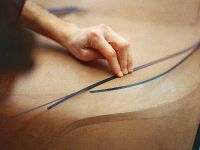
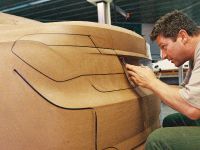
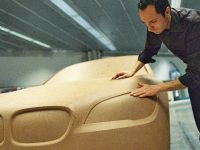
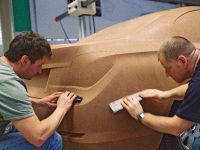
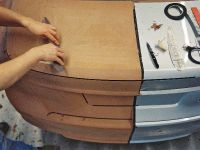
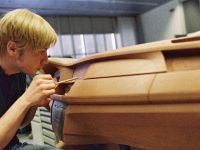
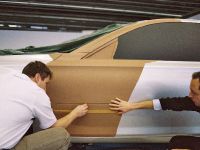
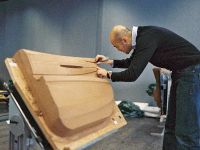
![2013 BMW 7 Series Facelift [VIDEO]](http://www.automobilesreview.com/uploads/2012/07/2013-BMW-7-Series-B.jpg)
![2016 BMW 7 Series Officially Revealed! [Details&Videos]](http://www.automobilesreview.com/uploads/2015/06/2016-BMW-7-Series-FF.jpg)
